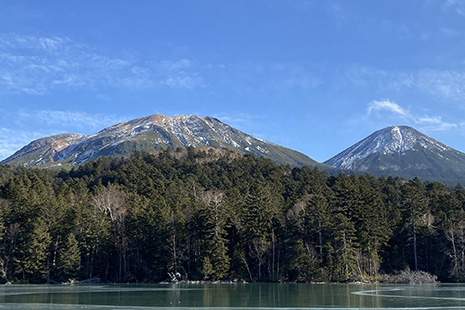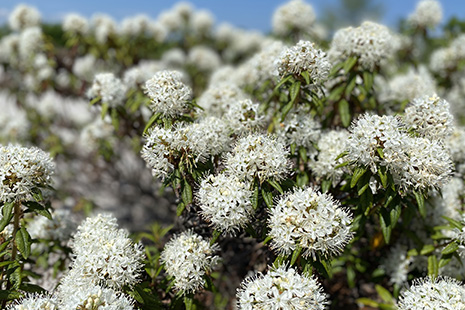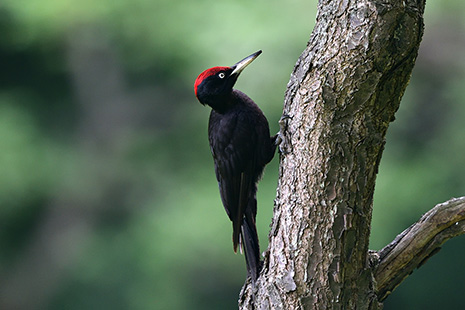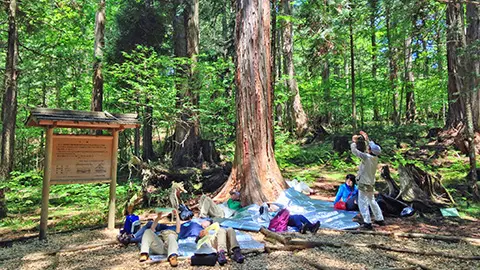VOL.192 MAY 2024
JAPAN’S HEALING FORESTS (PART 1)
Enjoy a walk in the forests of Akan-Mashu National Park

Photo: Akan-Mashu National Park

Photo: Akan-Mashu National Park
Akan-Mashu National Park is located in eastern Hokkaido, which is the northernmost part of the Japanese archipelago. Most of the 91,413 hectares of this huge park are covered with natural forests, mainly subarctic coniferous forests, which have retained their original appearance. The park Management Office introduced us some interesting areas to walk around within the park.

Highlights of Akan-Mashu National Park
Akan-Mashu National Park is located in the eastern part of Hokkaido, between the Sea of Okhotsk to the north and the Pacific Ocean to the south. Cutting through the center of the park is a volcanic belt that stretches from the Kamchatka Peninsula to the Chishima Islands, creating a spectacular landscape of volcanoes, forests and lakes. Suehiro Keishiro, the National Park Utilization Planning Officer of the Management Office explains.
“The foundation of this national park is the three calderas* created by the activities of the Chishima Volcanic Belt. The topographical features of volcano-lake pairs in close proximity to each other within small areas are rare in Japan. The park is huge, and consists of two distinctive areas. The first is the ‘Akan area,’ which is surrounded by deep primeval forests, and consists mainly of the majestic peaks of Mount Oakan and Mount Meakan, and Lake Akan, Lake Onneto and the other lakes and marshes in the area. The other is the ‘Mashu area,’ where you get a feel of the moisture and circulation of the water, with Lake Kussharo, which fills the western half of Japan’s largest caldera—Kussharo Caldera—and Lake Mashu, one of the clearest lakes in the world.”
Suehiro told us how to enjoy the forests in the Mashu and Akan areas.
“The Tsutsujigahara Nature Trail from the Kawayu Visitor Center in the Kawayu Onsen hot spring area of Mashu to Atusanupuri (also known as Mt. Io) is a flat trail that can be traversed by foot in about one hour. It is a precious place with a unique ecosystem of alpine plants that can withstand the volcanic gases and acidic soil discharged from Mt. Io. You can stroll through the forests and observe the plants living in this special environment—the trail starts with a Coniferous Forest Zone, and also has a Broadleaf Forest Zone and an Iso-azalea** Zone, all within a short distance of about 2.5 kilometers. The sight of 100 hectares of pure white iso-azaleas in the forest in early summer (around June) is especially stunning.”

Photo: Akan-Mashu National Park
In the Akan area, we recommend a guided tour that explores the forests by the Maeda Ippoen Foundation****, which has been working for over 90 years to preserve sustainable forests. According to Hibino Akihiro of the Lake Akan National Park Ranger Station, “In the early 1900s, a great number of trees in the Akan area forests administered by the Maeda Ippoen Foundation were cut down to clear space for ranching and timber production.
However, Maeda Masana, the initial head of the park, believed that “this mountain should be changed from one to be logged into one to be viewed,” and based on his principle of not opposing the power of nature but maximizing it, long-term efforts have been made to keep the forests in their original state and pass them down the to future generations. You can enter the Hikari no Mori (Mystical Forest) and Kohoku no Mori (North of the Lake Forest) with a qualified Ippoen Forest Guide. The many interesting spots include a giant katsura (Cercidiphyllum japonicum) tree said to be 800 years old and Tezukanuma Swamp with its hot springs, so we recommend that you have the experience of forest bathing in a primeval forest preserved by the people of Akan.”

The Akan-Mashu National Park is currently part of the Project to Fully Enjoy National Parks.
Suehiro said, “In order to make the park more accessible to overseas visitors, we are working on a variety of projects, including the renovation of overnight accommodations and observatory facilities. We hope that many people will visit the unique, majestic forests of Akan-Mashu.”
* A depression formed by volcanic activity.
** A small evergreen shrub native to Hokkaido that is 30-70 cm tall. It is sometimes seen in gravelly alpine areas, and also grows in some volcanic ash areas and marshlands.
*** Found in Hokkaido and on Mount Hayachine in Honshu. It is designated as a Tree of Hokkaido along with the Ezo spruce.
**** A foundation set up to carry on the wishes of Maeda Masana, who developed the expansive mountain forests along the lakeside of Lake Akan in Hokkaido in early 1900, and to contribute to the preservation of its natural environment and appropriate use.
By Morohashi Kumiko
Photo: Akan-Mashu National Park; PIXTA

